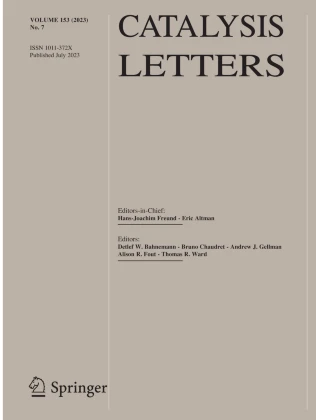Single-Atom Catalysis for CO Combustion in Automotive Exhaust: A DFT Study
Abstract
Automotive emissions, particularly carbon monoxide (CO), are a significant environmental concern, and effective catalytic solutions for their treatment are critical for reducing air pollution. Regulating different coordination environments to enhance the catalytic combustion activity of CO on cobalt graphene single-atom catalysts (CoNx-Gr) is an effective method. The possible reaction mechanism pathways of CO on CoNx-Gr were systematically studied through theoretical calculations. By comparing the energy distribution of three mechanisms, the best coordination environment catalyst was screened out, which is the tri-nitrogen coordination with an energy barrier of only 0.40 eV. Compared to the Eley–Rideal (ER) mechanism, CoNx-Gr dominated by the Termolecular Eley–Rideal (TER) mechanism still exhibits high catalytic combustion performance for CO at room temperature. The stability of the CoNx-Gr catalyst was verified through cohesive energy and ab initio molecular dynamics (AIMD) simulations. Microkinetic analysis indicates that increasing the temperature can accelerate the reaction. This work provides valuable theoretical guidance for the design of transition metal single-atom catalysts and contributes to establishing a preliminary catalytic combustion reaction kinetic model.
Graphical Abstract

 求助内容:
求助内容: 应助结果提醒方式:
应助结果提醒方式:


